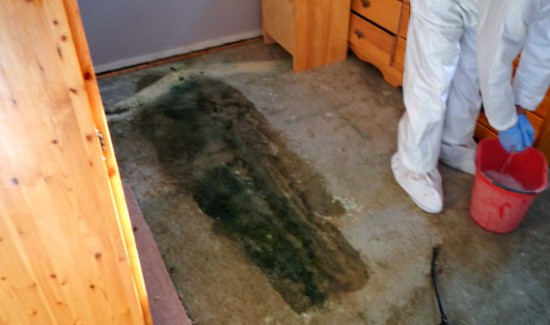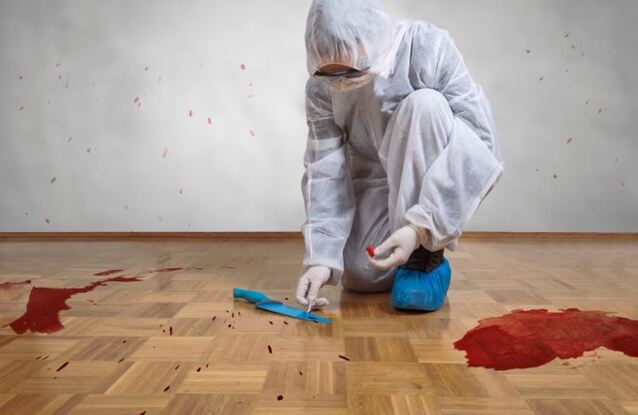Professional Blood Cleanup: Making Certain Safe and Thorough Decontamination
Professional Blood Cleanup: Making Certain Safe and Thorough Decontamination
Blog Article
Specialist Biohazard Clean-up for Crime Scenes, Injury Incidents, and Polluted Spaces
In the world of professional biohazard clean-up, thorough attention to detail and adherence to safety and security protocols are critical. As we dive into the complexities of biohazard cleaning for these sensitive environments, a much deeper understanding of the obstacles and crucial treatments entailed will certainly emerge, dropping light on the crucial role of expert clean-up solutions in recovering safety and peace of mind.

Significance of Biohazard Clean-up
Biohazard cleanup complying with criminal offense scenes and injury occurrences is vital for making sure the safety and security of people and the atmosphere. When these events happen, they often leave behind a range of biohazards such as blood, bodily fluids, and other potentially transmittable products. These materials can harbor hazardous microorganisms like microorganisms and infections, posing significant health risks otherwise appropriately cleaned up and sanitized.
Specialist biohazard clean-up solutions are educated to handle these unsafe materials securely and successfully. They have the required tools, such as personal safety equipment and specialized cleaning representatives, to thoroughly sanitize the affected areas. By turning over the cleanup to skilled professionals, people can prevent direct exposure to damaging pathogens and stop the spread of infectious conditions.
Furthermore, correct biohazard clean-up is essential for securing the setting. Incorrect disposal of biohazardous materials can pollute dirt, water sources, and air, posturing a risk to wild animals and the ecosystem. By complying with strict clean-up methods, professionals can make sure that biohazards are securely eliminated and dealt with according to regulations, lessening the threat of environmental contamination.
Kinds of Biohazards Encountered
Numerous dangerous materials typically come across in criminal activity scenes and injury occurrences existing considerable health and wellness dangers if not managed appropriately. Blood and bodily liquids are amongst the most common biohazards found in these situations.
Another kind of biohazard often encountered is sharp things like needles, busted glass, and other items that can create injuries and send infections. Chemical dangers are likewise a concern, as criminal activity scenes might consist of compounds like tear gas, pepper spray, or drug production products that require customized handling and disposal treatments to stop additional harm.
In addition, mold and mildew and microorganisms development can happen in spaces where decay or long term exposure to wetness has actually occurred. These microbes can release contaminants and allergens right into the air, presenting breathing risks to those revealed. In general, biohazard cleaning experts have to be experienced and fully equipped to successfully manage these different kinds of hazardous products to guarantee the safety and security of themselves and others.
Devices and Protective Gear
When attending to the essential task of taking care of biohazards encountered in criminal activity scenes and trauma events, the application of proper devices and safety equipment is critical to making sure the safety and security of individuals included in the cleaning process. Personal protective tools (PPE) such as handwear covers, masks, coveralls, and goggles are vital Blood Cleanup to protect against straight call with potentially hazardous compounds. Respirators are critical when dealing with biohazards that may end up being airborne, securing employees from breathing in unsafe fragments. Specialized cleansing devices like biohazard sharps, disinfectants, and bags containers are necessary for the safe collection and disposal of contaminated materials. Additionally, heavy-duty equipment such as industrial-grade cleaning agents, foggers, and ozone generators may be required to thoroughly sanitize the affected location. Making certain that all tools is effectively kept, frequently checked, and utilized according to security guidelines is vital in minimizing the threat of direct exposure to biohazards throughout cleaning procedures.
Cleaning Process and Strategies
Complete and efficient clean-up of biohazardous materials from criminal offense scenes and injury events calls for precise focus to detail and adherence to stringent safety and security procedures. The cleaning process usually entails several crucial actions. Initially, the location has to be evaluated to figure out the level of contamination and the suitable cleansing strategies needed. Next, all biohazardous products, including blood, bodily fluids, and cells residues, need to be very carefully gotten rid of and thrown away in accordance with regional laws.
Following the removal of biohazardous materials, the damaged area undertakes an extensive cleansing and disinfection procedure. This action entails using specialized cleaning agents and tools to make sure that all traces of contamination are gotten rid of. After cleaning, the location undergoes strenuous testing to verify that it is complimentary and safe of any staying biohazards.

Decontamination and Disposal Treatments
To ensure complete decontamination and appropriate disposal of biohazardous materials, following the thorough cleanup procedure, particular procedures need to be carefully adhered to with strict adherence to security procedures. Purification includes the removal or neutralization of impurities to decrease the risk of exposure and spread of harmful materials. This procedure usually consists of cleansing, disinfecting, and sanitizing the affected area using customized tools and EPA-approved chemicals.
As soon as purification is finished, appropriate disposal of biohazardous products is crucial to stop more contamination or harm. Biohazardous waste, such as blood-soaked materials or bodily liquids, have to be carefully accumulated, packaged, and classified according to governing guidelines. ATP testing. These materials are then transported to licensed centers for disposal with suitable channels, ensuring conformity with neighborhood, state, and federal policies

Final Thought
To conclude, expert biohazard clean-up is crucial for making sure the secure and effective removal of harmful products from crime scenes, trauma occurrences, and contaminated spaces. By using specific tools, protective gear, and following appropriate clean-up processes and techniques, biohazard cleanup teams can properly decontaminate and dispose of biohazards, lessening the threat of direct exposure and injury to individuals and the environment.
As we delve into the ins and outs of biohazard clean-up for these delicate settings, a deeper understanding of the challenges and crucial procedures included will emerge, dropping light on the vital duty of specialist cleaning solutions in recovering safety and security and tranquility of mind.
Specialist biohazard cleaning solutions are educated to manage these unsafe products securely and successfully. By following stringent clean-up protocols, experts can make sure that biohazards are safely eliminated and disposed of in accordance with regulations, decreasing the threat of ecological contamination.
Generally, biohazard clean-up professionals must be well-equipped and trained to successfully deal with these various kinds of harmful materials to ensure the safety and security of themselves and others.
When addressing the critical job of managing biohazards experienced in crime scenes and injury events, the utilization of correct devices and protective equipment is critical to guaranteeing the safety and security of individuals involved in the cleaning process.
Report this page